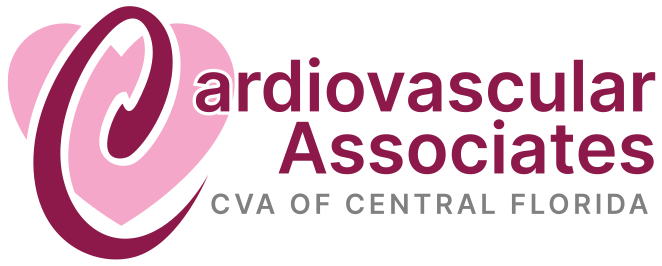Arterial and Venous Ultrasound
What is Arterial and Venous Ultrasound?
Arterial and Venous Ultrasound uses high-frequency sound waves to visualize the body’s arterial and venous systems and assess blood flow. A handheld transducer is moved over the area as sound waves bounce off blood cells, creating images of vessels on a monitor.
Blood flow through arteries and veins causes a change in pitch of the reflected sound waves called the Doppler effect. This data is used to show blood flow direction and velocity.
Risks Vs Benefits of Arterial and Venous Ultrasound
The benefits of arterial and venous ultrasounds significantly outweigh the minimal risks associated with the procedure. These ultrasounds offer valuable insights into your vascular health, aiding in accurate diagnosis, early detection, and personalized treatment planning. If you have concerns about your vascular health or have risk factors for vascular conditions, consulting a vascular specialist and undergoing an arterial and venous ultrasound can play a pivotal role in maintaining your cardiovascular well-being.
Benefits of Arterial and Venous Ultrasound
- Non-Invasive
Arterial and venous ultrasounds are non-invasive and painless procedures. They do not involve radiation exposure, making them safe for patients of all ages. - Accurate Diagnosis
Ultrasounds provide real-time images of blood vessels, allowing accurate visualization of blood flow, blockages, and abnormalities. This aids in the early detection and diagnosis of various vascular conditions. - Early Detection
Vascular ultrasounds can detect conditions like arterial stenosis, blood clots, aneurysms, and venous insufficiency at an early stage. Early detection allows for timely intervention and better treatment outcomes. - Tailored Treatment Plans
With detailed images of the blood vessels, vascular specialists can create personalized treatment plans that address specific patient needs. This precision leads to more effective and targeted interventions. - Monitoring Progress
Vascular ultrasounds enable ongoing monitoring of vascular conditions, helping doctors track changes over time and adjust treatment strategies as necessary.
Risks of Arterial and Venous Ultrasound
- Minimal Discomfort
The gel used during the procedure might feel cold and wet on the skin, causing mild discomfort for some patients. However, this sensation is temporary and dissipates quickly. - Rare Allergic Reactions
Some individuals might experience a mild allergic reaction to the gel used during the procedure. However, allergic reactions are extremely rare. - Limited Imaging Depth
While ultrasounds are highly effective for imaging blood vessels close to the skin's surface, they may have limitations in visualizing deeper structures. In some cases, additional imaging methods may be recommended.
What to Expect Before, During, and After an Arterial and Venous Ultrasound
Before undergoing an arterial and venous ultrasound, there's generally minimal preparation needed. You can continue with your regular eating, drinking, and medication schedule. However, it's advisable to avoid applying lotions or oils to the area being examined on the day of the procedure. Comfortable clothing that allows easy access to the examination area is recommended.
During the procedure, you will be asked to lie down on an examination table. A water-based gel will be applied to the area being examined, ensuring good contact between your skin and the handheld device called a transducer. The transducer emits high-frequency sound waves that create images of your blood vessels. The vascular technologist will move the transducer over the skin in the region of interest to capture images from various angles. This process is painless and non-invasive, and you might hear gentle whooshing sounds as the sound waves interact with the blood flow. After the arterial and venous ultrasound, you can immediately resume your regular activities. Here are a few things to keep in mind post-ultrasound:
- Depending on the results, further diagnostic tests or treatment options might be recommended.
- Your specialist will discuss the findings with you, address any concerns, and collaborate on a personalized care plan.
- If you have known vascular conditions, regular ultrasounds could be advised to monitor changes over time.
Am I a Candidate for Arterial and Venous Ultrasound?
Early detection and proactive management of vascular conditions can lead to better outcomes and improved quality of life. If you suspect you may benefit from arterial and venous ultrasound, you should talk to your cardiovascular specialist. If you are experiencing symptoms or have risk factors associated with vascular conditions, you may be a suitable candidate for this imaging technique. Here are some situations where arterial and venous ultrasound might be recommended.
- Peripheral artery disease (PAD) symptoms
If you are experiencing symptoms such as leg pain, cramping, numbness, or weakness, especially during physical activity, you may be at risk for peripheral artery disease. Arterial ultrasound can help assess blood flow in the arteries of your legs and arms, providing valuable information about potential blockages. - Varicose veins or venous insufficiency
If you have visible varicose veins, leg swelling, or pain, venous ultrasound can evaluate the condition of the veins close to the skin's surface. This procedure can help determine if you have venous insufficiency, a condition where veins have difficulty sending blood from the legs back to the heart. - Deep vein thrombosis (DVT) concerns
If you have symptoms such as leg pain, swelling, or warmth, which could indicate a potential deep vein thrombosis (DVT), venous ultrasound can be used to detect blood clots in the veins. This information is crucial for timely intervention and prevention of complications. - Monitoring blood clot treatments
If you are undergoing treatment for blood clots, regular arterial and venous ultrasound can be used to monitor the effectiveness of the treatment and track any changes in the clot. - Vascular anomalies or conditions
If you have a known vascular anomaly, congenital condition, or require ongoing monitoring of your vascular health due to medical history or risk factors, arterial and venous ultrasound can provide valuable insights into your blood vessel structure and function.
Take a Closer Look at Your Vascular Health with Arterial and Venous Ultrasound
Photo Gallery
Video Gallery
Testimonials
Photo Gallery
Get To Know Our Cardiologists
In Search of Care? Request a Consultation Today


 Fax: 407-846-2524
Fax: 407-846-2524
